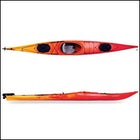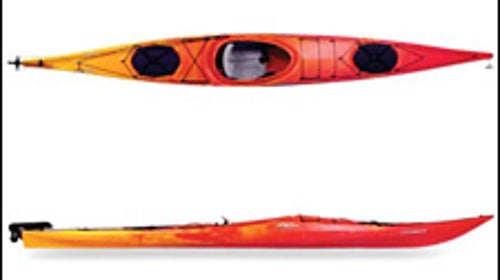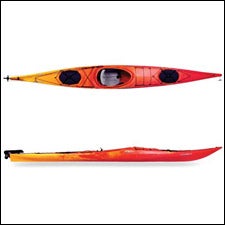You have a few choices, Nancy, but not a million of them. And all of them will have a caveat: Short of getting a sit-on-top, which I don聮t think will work for the kind of paddling you want to do, you won聮t know what really fits until you go sit in one.
 Necky Looksha V Kayak
Necky Looksha V KayakBut there are certainly boats designed for larger paddlers, and with the capacity to handle 400 pounds (boater and gear). One candidate would be the Necky Looksha V ($1,699 polymer/$2,999 composite; necky.com). It聮s what聮s described as a 聯high-volume” kayak, meaning it has more interior room and is a little bit wider in the beam than most boats. Still, it聮s known for easy paddling and good tracking, and a rudder helps with maneuverability. Necky doesn聮t list a total weight capacity, but it聮s a big boat (over 17 feet), with roomy bow and stern hatches, so I shouldn聮t think 400 pounds would pose any real challenge to it, especially for lake paddling.
Better yet might be Wilderness Systems Tsunami 175 ($1,650; wildernesssystems.com). It聮s a roto-molded boat like the less-expensive Looksha, but it isn聮t quite as performance-oriented and is a bit wider and even more stable. The cockpit, in fact, is three inches wider and four inches longer than that on the Necky. It聮s rated to 400 pounds capacity, has a rudder, and comes with fore and aft stowage hatches as well as a small 聯day” hatch right behind the cockpit. Plenty of room for multi-day trips.
Lastly, Perception聮s Eclipse 17 Airalite ($2,400; kayaker.com) offers 425 pounds of weight capacity with a cockpit that聮s in between the Necky and Wilderness Systems boats. It聮s made from Airalite, a really wonderful material that offers the light weight and looks of composite boats but doesn聮t cost too much more than plastic.


